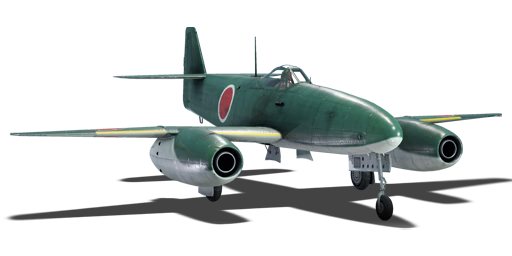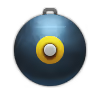



The Kikka is the first Japanese jet and was a land-based attack plane developed by Nakajima for the IJNAS to attack US warships at high speed and close range with bombs. Taking inspiration from German jet development and advancement, the Kikka, contrary to common belief, was completely domestic in development and role for Japanese needs. Construction of the Kikka was simplified to allow unskilled labor and mass produce the jet plane to build up a large reserve of homeland defense and strike at American vessels. With the war ending, two prototypes were tested, 23 more proto-frames were under construction, and production halted.
In War Thunder, the Kikka is a fast and versatile fighter-bomber introduced in Update 1.43. It starts with a single 30 mm which can be modified with the 'otsu' mod equipping the second 30 mm. It is crucial to utilize speed, as that is its most significant advantage against most aircraft it encounters. While it can be loaded with up to 800 kg of bombs, it slows the jet down massively due to the added weight, which is not advisable for air combat; against naval and ground targets, it is crucial to dive in at high speed to come in and out while evading anti-air fire with speed.
flaps
flaps
flaps
brake
| Belt | Belt filling | Armor penetration (mm) at a distance: | |||||
|---|---|---|---|---|---|---|---|
| 10 m | 100 m | 500 m | 1000 m | 1500 m | 2000 m | ||
| HEF/HEF-I/HEF-T/APHE | 38 | 36 | 28 | 21 | 16 | 12 | |
| HEF-T/HEF-I/APHE/HEF/HEF | 38 | 36 | 28 | 21 | 16 | 12 | |
| HEF-T/APHE/APHE/APHE | 38 | 36 | 28 | 21 | 16 | 12 | |
| HEF-T | 5 | 5 | 4 | 3 | 3 | 3 | |
| HEF | 5 | 5 | 4 | 3 | 3 | 3 | |
| Belt | Belt filling | Armor penetration (mm) at a distance: | |||||
|---|---|---|---|---|---|---|---|
| 10 m | 100 m | 500 m | 1000 m | 1500 m | 2000 m | ||
| HEF/HEF-I/HEF-T/APHE | 38 | 36 | 28 | 21 | 16 | 12 | |
| HEF-T/HEF-I/APHE/HEF/HEF | 38 | 36 | 28 | 21 | 16 | 12 | |
| HEF-T/APHE/APHE/APHE | 38 | 36 | 28 | 21 | 16 | 12 | |
| HEF-T | 5 | 5 | 4 | 3 | 3 | 3 | |
| HEF | 5 | 5 | 4 | 3 | 3 | 3 | |
| Belt | Belt filling | Armor penetration (mm) at a distance: | |||||
|---|---|---|---|---|---|---|---|
| 10 m | 100 m | 500 m | 1000 m | 1500 m | 2000 m | ||
| HEF/HEF-I/HEF-T/APHE | 38 | 36 | 28 | 21 | 16 | 12 | |
| HEF-T/HEF-I/APHE/HEF/HEF | 38 | 36 | 28 | 21 | 16 | 12 | |
| HEF-T/APHE/APHE/APHE | 38 | 36 | 28 | 21 | 16 | 12 | |
| HEF-T | 5 | 5 | 4 | 3 | 3 | 3 | |
| HEF | 5 | 5 | 4 | 3 | 3 | 3 | |
| Name | Weight | Slot | ||||||
|---|---|---|---|---|---|---|---|---|
| 507 kg |  | |||||||
| 805 kg |  | |||||||












Flight performance | |
|---|---|
Survivability |
|---|
Weaponry | |
|---|---|